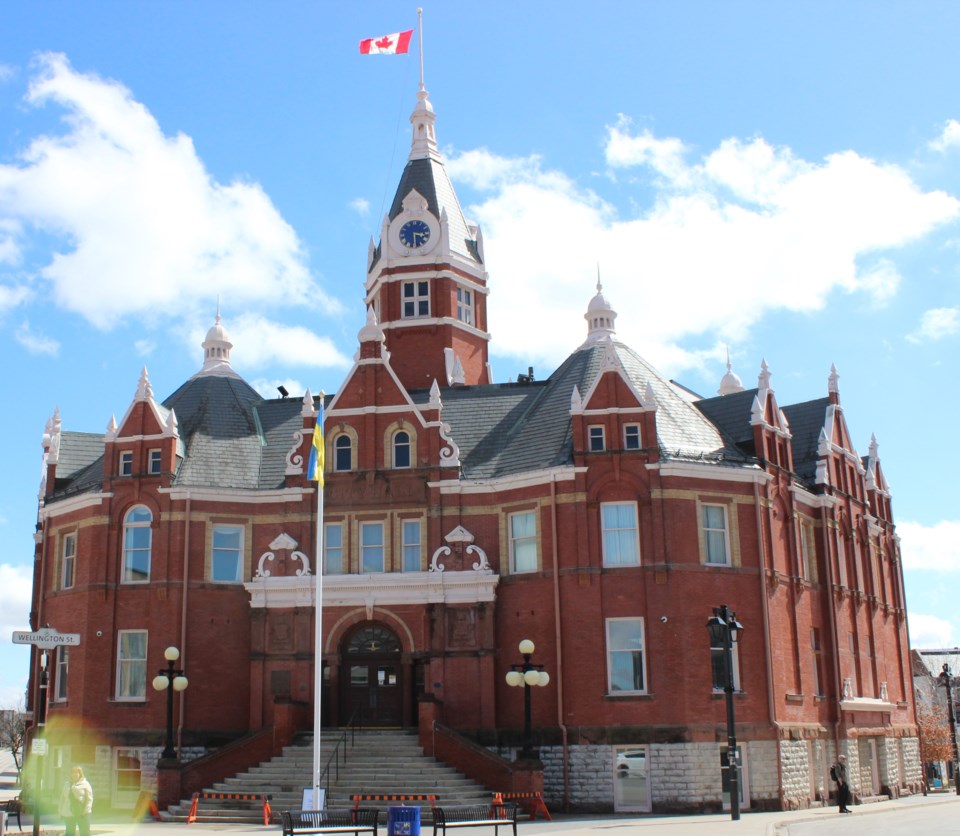The first full calendar year for the new city council is in the books.
StratfordToday took a look back at some of the decisions and issues that council discussed and moved forward with.
Council voted to keep the Stratford Municipal Airport, even after an extensive study found that it is not financially sustainable and is unlikely to become sustainable.
Faced with a few options, council decided to keep the airport and to work to make it revenue neutral, something the study indicated may be possible with a proactive business approach.
Although some councillors believed that the airport was a luxury that the city could not support, and one that not many residents actually used, a few councillors spoke about its intangible benefits to the city, including Mayor Martin Ritsma.
“I firmly believe that it is an asset that the city should retain,” Ritsma said. “I believe that there are opportunities out at the airport for us to make it a revenue-neutral investment. And I really do believe that. I also believe that there are services provided out there that we truly can't quantify with regards to a dollar figure.”
Stratford’s biggest project …
The Grand Trunk block, an 18-acre site on the southern edge of downtown Stratford, is a keystone project for the city and one that will take years to come to fruition.
Although the historic site’s redevelopment has been discussed in the past, plans began to crystallize in 2023.
Former Mayor Dan Mathieson was appointed as chair of a new ad-hoc committee, which will produce an execution strategy for council to use moving forward.
A workable roadmap, the strategy will be a list of what needs to happen, in what order, and every decision that can be made on the site. It will be developed through discussion and consultation with community partners. After being developed, it will go to council for final approval and ratification.
The committee was appointed shortly following Mathieson’s (appointment?). A large amount of applicants put their name forward, prompting staff to recommend using those applicants for working groups to assist the committee.
In all, it comprises 13 committee members, eight chairs, five working groups and two coordinators, all with a range of expertise.
By and large the committee members appointed, who are not getting paid for their time, are the recommended applicants by city staff and Mathieson.
Some proposed amendments were shot down, with discussion largely around whether or not “nitpicking” was the best thing to do in a long and difficult project.
Coun. Jo-Dee Burbach had the most proposed amendments. She clarified that her changes were not due to any issue with individual applicants recommended by city staff and the committee chair.
“When I look at the recommended list, I was looking at it with the lens of some diversity and a bit more equity and inclusion – and looking at what people bring to the table, their perspectives, their ages, their position in life. So some of these recommendations are based on trying to diversify what's not a very diverse slate.”
For instance, Burbach said, all except one of the recommended appointments were over age 50. The vision for the Grand Trunk property will have an impact on multiple generations and should have representation on its committee from multiple generations.
The committee and working groups will meet in 2024. Mathieson had previously estimated that an execution strategy will be ready by early 2024.

New plans to guide the city
A number of new plans were formally adopted by city council in 2023.
The new Transportation Master Plan (TMP) was adopted in November. It is an updated and integrated version of two previous plans, the 2010 Transportation Master Plan and the 2014 Active Transportation Master Plan.
The idea was to have one unified plan that had a “safety-first philosophy.”
Fifty-four projects are recommended in the TMP. They will shift the way transportation is conceptualized and done in the city. It requires a significant investment to the road, cycling, and pedestrian road systems – an investment that may total up to $60.7 million by 2041.
The biggest investment is in the City’s cycling network, with a projected price tag of $37.2 million. The high-end estimate of the street investment is $16.1 million and $7.4 million is estimated for walking infrastructure.
The projects will mainly take place from 2024 to 2026. Some long-term actions go beyond 2041.
Each individual project will come to council for approval. By adopting the TMP, council did not commit to any investment just yet.
For instance, at the same meeting that the TMP was adopted, council voted to table lowering speed limits in residential areas in the city, one of the “supporting strategies” listed in the new plan.
Council also adopted the Stratford Municipal Cultural Plan this year.
Similarly to the TMP, it outlines 15 goals, 44 recommendations, and 128 potential actions for the city.
It lists four priorities, including to strive for creativity and innovation, to celebrate diversity, and support inclusion, to instill community pride through the promotion of a shared, authentic identity, and to further truth and reconciliation.
Stratagems are to be implemented in the next five years.
Additionally, council began the year-long Official Plan (OP) review this year, which will entail council and the general public taking a good look at the document that guides growth and development in a city over 2024.
At a public meeting held on Dec. 7, residents gave their opinions on what an OP should include. It was estimated that a brand new or amended OP will be ready by the last quarter of 2024.
Hot topics this year …
Although the public often delegated at council this year, there were a few topics that packed the gallery.
After Coun. Cody Sebben made a motion to issue a notice of intent to designate Avon Crest, Stratford’s first hospital, as a heritage building, dozens of people came to Stratford city hall to express their support for the old building.
Just earlier that day in March, the Huron Perth Healthcare Alliance (HPHA) announced its intent to demolish the building to build a new 128-bed long term care home in its place.
After two hours of delegations advocating for the hospital to be saved, council voted to get a legal opinion on the matter. In a subsequent meeting, after hearing an opinion that is subject to solicitor-client privilege, a motion to designate failed.
Avon Crest was demolished late this year.
A controversial decision to not renew Stratford Bingo Country’s lease at the Burnside Agriplex also saw many people at city hall.
The decision was made in September. Tim Wolfe, director of community services with the city, told council that under previous direction given to staff from council, staff have been working to better utilize the municipality’s spaces for all of its communities.
The large room that Stratford Bingo Country used was often sitting empty for long periods of time, he reasoned, and per the direction that council gave staff he said that the municipal-owned space could be better utilized.
Although Coun. Bonnie Henderson and Sebben both supported some form of renewal for the organization, nothing transpired.

Moving forward …
Next year is around the corner and council still has big decisions to make.
After two, day-long budget deliberations in mid December, council is looking at a 9.98 per cent raise to the tax rate, based on a levy increase of 12.46 per cent.
No one on council was pleased with that figure, though deliberations will continue in January.
With operating budgets, capital forecasts, and expansion projects discussed already, service cuts or a rise in user fees will be eyed to lower that number.
Last year, council approved a tax rate increase of 4.66 per cent, based on a levy increase of 6.97 per cent.



